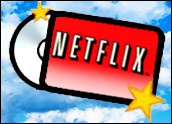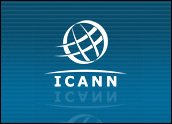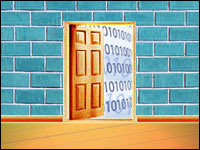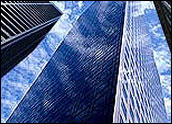
Esther Dyson, the Great Dame of Silicon Valley, at times matriarch to Bill Gates and many other lads on the innovation circuit, wrote a harsh column Aug. 26 about ICANN’s gTLD system, titled “What’s in a Domain Name?”
I like and respect Esther, especially for her technical background — we have shared the podium. However, as this topic deals with the centrality of global corporate nomenclature, it demands an authoritative analysis, and I feel it’s my responsibility to clarify a few points.
Dyson begins by asserting that “a name is just a sound or sequence of letters. It carries no value or meaning other than as a pointer to something in people’s minds.”
On the contrary, a name carries all the value. Without a name identity, a brand is no different than unlabeled goods stacked in warehouses, or global commercial services gasping and dying without being identified.
Imagine eBay, Gucci, Rolex or Google without a name; they would become penny stocks. It’s the power of the name — the perception of value that it creates. Without a name identity, big or small, you have nothing. Only the big branding mentality is logo-slogan centric and looks to a name just as a pointer.
Fruit-Inspired Folly
Dyson goes on to say that it’s a trait of modern economies that people are able to distinguish between generic terms — she gives fruit as an example — and trademarks, which “refer to specific goods or services around which someone has built value.”
Trademark law explained a century ago that generic words cannot be trademarked. Naive entrepreneurs often use them nevertheless, at great risk. Apple was dragged into courts over the conflict with the Beatles’ Apple Corps, which eventually resulted in the largest settlement of the period.
Despite all the problems, Apple survived and acquired a worldwide “secondary meaning.” Its common use is now quickly associated with the computer company and not the fruit. Orange, Banana, Apricot and many other fruity-named enterprises keep drowning and are often kept alive only via rebranding life support. Despite all the so-called glory attached to a few successes, it is wrong to adopt a moniker that’s a commonly used generic name, even though it may be trademarked under a specific “ware” of classification.
In a case when a generic main name is attached to another word to describe its service, the secondary word attached to the name is hardly ever used, and the naked usage of the first word only becomes awkward — and eventually a big trademark liability. In modern economies, Watermelon Systems and Strawberry Securities are doomed from the start, and only heavy advertising can keep them alive.
Dyson recalls her days as founding chairman of ICANN, when “we more or less followed the rules of trademarks, with an overlay of ‘first come, first served.’ If you could show that you owned a trademark, you could get the ‘.com’ domain for that name, unless someone else with a similar claim had gotten there first.”
Reflecting back on the early domain name launch, I recall that it was a disaster. There were no trademark rules followed. It was nothing but anarchy, with domains handed out on a first-come, first-serve basis while intellectual properties were looted in broad daylight.
Soon there were 1 million domain registrations per day and a thriving worldwide cybersquatting industry. The confusion created a boom in reckless advertising and led to huge branding and trademark fights.
The Necessary Work Ahead
“The value is in people’s heads — in the meanings of the words and the brand associations,” insists Dyson, “not in the expanded namespace.”
Expanding the namespace does increase value. The value in people’s heads comes from a name’s accessibility and usability, which in turn add to increased visibility. This visibility increases the value of the brand, as visible brands are chosen over obscure brands. gTLD creates new layers of usability.
The visibility that domain names brought to IBM and Xerox are as significant as the effect TV broadcasting had on name identity.
Apple will have added usage with unlimited dot-apple applications. It can control and allocate at wish creative digital sub-name branding services. Back to the fruity example, which now seems to be attached to products, thanks to its generic disposition. “Apple phone,” “Apple iPod” and “Apple computer” are all common phrases because “Apple” is not distinct enough. It isn’t necessary to point out that a Rolex is a watch. Pointers are signs of weak names.
Global corporate nomenclature became complex with little room for overly creative, easy-access domain naming, while over-friendly generic use made the branding sector the beneficiary, to the tune of US$500 billion yearly. Weak names need constant oxygen to survive. It’s not the complexity; it’s the simplicity of the issue that’s missing.
Dyson maintains that the new gTLD naming will “create jobs, but little extra value. To me, useless jobs are, well, useless.”
It’s another myth that gTLD will result in extra work with no value. Has the Internet been good to our society? Have 200 million domain names served our commerce well? With a billion-plus new users coming online, what’s useless is to think that extra work is unnecessary.
“One Internet, one world thinking” demands global naming systems that will manage billions of domain names of all sorts and types on a multilingual format for the global population. This is a formidable task that requires continuous expansion on all fronts. It’s not a question of useless work — it’s all about facing the future boldly and dealing with the exponential reality of 5 billion Internet users by 2020.
Dyson invites us to imagine owning a valuable patch of land that someone wants to divide into smaller parcels and then charge a fee to protect each one of them.
In fact, the “agrarian” cybersquatter activity originated and thrived under the cheap, no-questions-asked domain name system. It provided more than 10,000 UDRP cases, with lawyers sorting out the disputes at many thousands of dollars each.
From the standpoint of business costs, well-structured and protectable names win their cases with ease. That’s not the case with loosely composed generic names that flew out of a dictionary.
“Coca-Cola is that farmer,” Dyson continues. “It and other trademark holders are now implicitly being asked to register Coca-Cola in each new TLD — as well as to buy its own new TLDs.”
Famous brands routinely defend against trespassing and win. The bigger question is in the gTLD process, as complicated as getting a city to host the Olympics. How likely is it that brand names — say, dot-Deloitte or dot-Sony — would trespass and secure, say, “Coke.Deloitte” or “Coke.Sony” and then offer those domains to the general public, as is done with the current system? To do what — raise enough money to cover one hour of their electricity bill?
This fear mongering is based purely on the old domain name mentality and is proof of a lack of understanding of the new system among marketers of the world. The old system was designed for easy and free access that enabled widespread stealth of identities. This gTLD system is far too expensive and complicated to encourage petty theft. It will not end the trademark-protection problem, but it will certainly put a sober new face on it.
“The only shortage,” maintains Dyson, “is a shortage of space in people’s heads.”
The only shortage in people’s heads comes from poor recall-ability of generic and diluted names. Which United? Which National? Which First? Weak and borderline brands are threatened for many reasons. Primarily, Western brands are facing the brands of emerging economies that are being bolstered through digital compression and portability; they clearly have the cyberbranding edge.
The gTLD is not subdividing any cultivated name space; it will only provide tools to create more customer touchpoints. What exactly did the early domain name bring to our society? Fast-forward change, where unfit name identities broke down and collapsed along the way.
A Serious Game
Dyson refers to a Twitter conversation she had with Annalisa Roger, founder of DotGreen.org, who told her “about the value her group will be adding to .green: marketing, brand identity, raising money for NGOs. But I couldn’t help wondering why she can’t just add the same value to DotGreen.org.”
The $500,000 average cost of a gTLD for any reasonable project is highly affordable in comparison to the production cost of a single TV commercial, or a few full-page ads in major cities, or a logo-slogan, rebranding exercise — without the launch cost, of course.
A gTLD is not expensive; it is highly justifiable against its components of power and subnamebranding architecture. It’s a sophisticated game that demands special maneuvers.
The dot-branded generic names are a high risk entrepreneurial heaven of high risks and high returns. Getting a gTLD for the purpose of cybersquatting someone else’s brand is ridiculous. Only cheap, dime-a-dozen domain names make this option look attractive and lucrative.
The bigger challenges are corporate nomenclature-based. Is “Green” really better than “Eco”? Why? Which would sell more? “Tel,” “Cell” or “Mobile”? “Car,” “Auto” or “Moto”? What’s the difference between “Ucar,” “Mycar,” “iDrive” or “Udrive” from a usability and marketing suitability point of view, and which combination will create more dilution in the long run?
This clearly points to the fear among global advertising agencies and branding services that the centrality of the gTLD application gets extremely intricate at the core of nomenclature. To admit this would be to admit that names do matter. This is where the “names as a pointer” school of thought collapses. One Internet, one world demands one name, one owner thinking.
“Suppose, for example,” argues Dyson, “that a cheese maker buys .cheese (as was suggested by one person at a new-TLD meeting recently) and uses it to favor only its own brands?”
Contrary to general perception, generic gTLDs cannot be trademarked. They are licenses to drive a master name identity on cyberhighways and create unlimited subnames to join the race.
The issuance of dot-cheese to Kraft or Bata simply gives them a communication and customer contact point advantage. By no means does it stop others from producing cheese or branding other types of cheeses or creating name brands.
This is an open race for serious marketers — no different than Walmart buying TV spots during the Super Bowl to maintain its dominance. It’s an open market, and all are free to play — if they know the rules.
“The real innovation has been in companies such as Facebook, LinkedIn, Twitter, and Foursquare, which are creating their own new namespaces rather than hijacking the DNS,” Dyson insists.
The social chatter is not name-branding but rather noise creation. The Facebook, LinkedIn types did not add any new nomenclature platform, but offered free usage of registration.
Building a name identity with the intention of commercializing an expandable base can only be achieved when the name management organization is fully committed to deliver such tangibles.
The gTLD is a formidable exercise in this pursuit, and it would be very naive to assume that filling out a customer service card at McDonald’s or e-voting creates a namespace. The gTLD, by virtue of its seriousness and size, will be open to a lot of innovative applications along the way. There will be spectacular successes and catastrophic failures on most major new fronts.
“Most of the people active in setting ICANN’s policies are involved somehow in the domain-name business, and they would be in control of the new TLDs as well,” asserts Dyson.
The Internet without domain names is basically useless. If ICANN is the mother operator of the Internet, obviously apart from security and hard wiring, global naming systems are its prime responsibilities. Success in the creation of domain name devices is the only key to open the hidden universe behind the website.
“Of course, if I am right,” Dyson suggests, “the DNS will lose its value over time, and most people will get to Web sites and content via social networks and apps, or via Google (or whatever supersedes it in the competitive marketplace).”
Names have provided eternal longevity to ideas and brands. Social media are a novelty that will run their course in time. Bad names kill good brands. No matter how it’s chatted, typed, whispered, called, yelled or found on search, the fact remains: Without a name, there is no brand.
The more unique and powerful the name, the more it climbs to the top; the more diluted, the more it sinks. Social media are just another place where good names can swim. Advertising provides flotation to sinking names. How well a name identity secures global mindshare will forecast the continuation of its success.




















































Social Media
See all Social Media